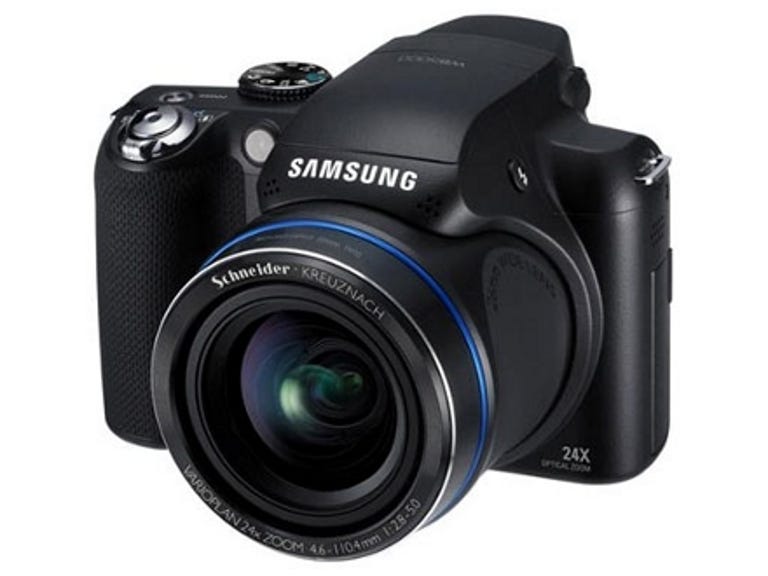 Why You Can Trust CNET
Why You Can Trust CNET Samsung WB5000 review: Samsung WB5000
Samsung's plunged into the superzoom pool with the 12.5-megapixel WB5000. With a 24x zoom, manual controls and the ability to shoot raw files, it's a versatile beast to be sure. It also has an excellent LCD display, and is straightforward to use, although its rendering of fine detail could be better
Samsung has joined the superzoom set with the 12.5-megapixel WB5000. It boasts a 24x, 26-624mm zoom, a high-definition movie mode, image stabilisation and manual controls. You can even shoot raw files, just like the pros. The WB5000 needs to be good, though, because, at around £280, it's not the cheapest superzoom on the market by any means.
The Good
The Bad
The Bottom Line
Zoomalicious
The WB5000's strong points are pretty clear from its specifications, with its huge zoom range, manual controls and sheer versatility. The zooming is unusually fast for a lens with this kind of range, and the autofocus remains fast even at full zoom and in poor light. The LCD display is excellent -- it's sharp, saturated and quick to respond to camera movement. The electronic viewfinder is slightly less impressive, looking somewhat grainy under the magnification of the viewfinder eyepiece, and there's a slight colour difference (the EVF looks slightly redder).

Samsung's control layout works well. A function button takes care of white balance, ISO, face detection, image size and quality, metering pattern and more, so you won't need to use the main menu system much. If you do, you'll find it easy to navigate, although the way the camera switches to a new screen when you choose an option is slightly disorientating.
The mode dial on the top is easy to turn but clicks firmly in each position and there are buttons on the back for EV compensation and exposure lock. It's all very clear and logical. It's quite a light camera for a superzoom, too, probably because it uses a li-ion cell, rather than AA batteries.
Below-par pictures
In fact, though, this low weight contributes towards the WB5000's slightly cheap feel, and there's something off-balance about its design, too, perhaps because of the combination of a slim body with a fat lens.
More seriously, though, its pictures aren't that impressive. Fine detail isn't rendered anywhere near as crisply as it is with Samsung's 12.2-megapixel PL70, for example, so, while the results are alright, they're certainly no better than any rival superzoom's. The image stabilisation doesn't seem that effective either, and it restricts the value of the super-long zoom range. In good light, you can expect to get pleasing, crisp shots if you're careful, but, if the light is failing, you'll need to increase the ISO, and, unfortunately, the WB5000's image quality drops quickly from ISO 400 onwards.
There's a 5.5-frames-per-second continuous-shooting mode, but the resolution is limited to 3 megapixels. If you want to shoot at full resolution, the best the WB5000 can do is around 1fps. The manual controls aren't all they appear to be, either. Instead of the aperture and shutter modes found on other superzooms, the WB5000 has a combined 'A-S' mode in which you control both at once -- it's more like a program-shift mode. It's not a big issue, but it's just rather odd.
Conclusion
The Samsung WB5000 is a pretty average superzoom. Perhaps its biggest problem at the moment is that its main rivals, like the Nikon Coolpix P90 and Panasonic Lumix DMC-FZ38, are a good deal cheaper and, it has to be said, slightly better (especially the DMC-FZ38). Superzooms like this have been around for ages now, and it's disappointing that Samsung couldn't come up with something better.
Edited by Charles Kloet
